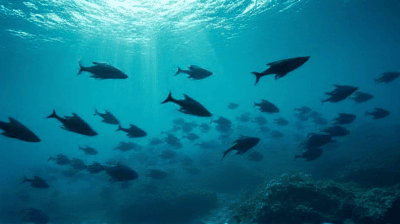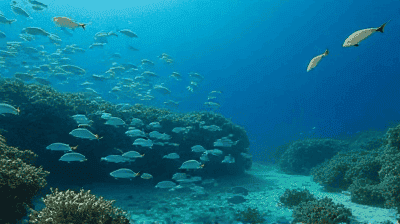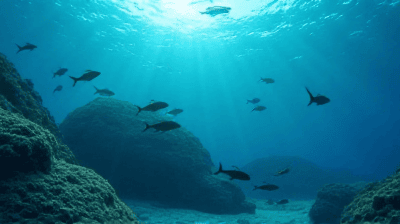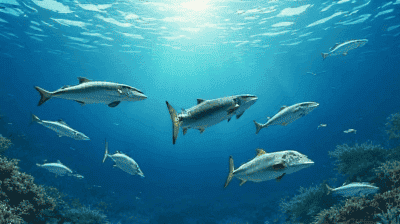
Marine ecosystems are among the most diverse and productive on the planet, providing invaluable resources and services that support human life and the health of the environment. However, these vital ecosystems are under siege from overfishing, habitat destruction, pollution, and climate change. To combat these threats, marine protected areas (MPAs) have emerged as a cornerstone of marine conservation strategies. MPAs are designated areas where human activities, such as fishing and resource extraction, are restricted or regulated to promote the conservation of marine biodiversity and ecosystems. One of the most debated aspects of MPAs is the effectiveness of fishing bans within these areas in fostering biodiversity recovery.
Marine protected areas are regions of the ocean where certain human activities are limited or prohibited to protect and restore marine ecosystems. The primary goals of MPAs include:
MPAs can vary widely in their regulations and management approaches. Some common types include:
International efforts to establish MPAs have gained momentum in recent years. The Convention on Biological Diversity (CBD) has set ambitious targets for marine conservation, advocating for the protection of at least 10 percent of coastal and marine areas by 2020, with a goal of reaching 30 percent by 2030. As of 2023, approximately 7.6 percent of the world’s oceans are designated as marine protected areas, and this number is continuously growing. However, the effectiveness of these protected areas in recovering biodiversity remains a critical question.

Biodiversity encompasses the variety of life on Earth, including the diversity of species, their genetic variations, and the ecosystems they form. In marine environments, biodiversity plays a crucial role in maintaining ecosystem health and resilience.
Marine biodiversity is essential for various reasons:
Marine biodiversity is threatened by a range of human activities, including:
Fishing bans within MPAs are implemented to:
When fishing is banned in MPAs, various mechanisms facilitate recovery:

Numerous case studies around the world have evaluated the impact of fishing bans in MPAs on biodiversity recovery. Here are a few notable examples:
The Great Barrier Reef, one of the largest and most diverse marine protected areas globally, has implemented no-take zones to protect critical habitats and fish populations. Research has shown that these zones have led to increased fish biomass and diversity, benefiting both marine ecosystems and local fisheries.
Designated as a UNESCO World Heritage Site, the Phoenix Islands Protected Area is one of the largest marine protected areas in the world. Studies have indicated a significant recovery of fish populations and coral cover in no-take zones, highlighting the effectiveness of fishing bans in promoting biodiversity recovery.
Once overfished, the Cabo Pulmo National Park implemented a fishing ban that allowed ecosystems to rebound dramatically. Research has documented a rapid increase in fish biomass, species richness, and the recovery of coral reefs, demonstrating the success of the no-take policy.
Beyond individual case studies, meta-analyses encompassing multiple studies have assessed the general effectiveness of fishing bans. Results indicate that:
While the effectiveness of fishing bans within MPAs is supported by numerous studies, challenges still exist:
One of the significant challenges faced by MPAs is the enforcement of fishing bans. Insufficient resources for monitoring and enforcement can lead to illegal fishing activities, undermining the effectiveness of the protected areas.
Fishing bans can create conflicts with local fishermen and communities who rely on fishing for their livelihoods. Ensuring that conservation efforts also consider social and economic factors is essential for the long-term success of MPAs.
Not all MPAs are created equal. The design, size, and management of protected areas play a crucial role in determining their effectiveness. Poorly designed MPAs may fail to protect key habitats or species, limiting their potential for biodiversity recovery.
While fishing bans can enhance biodiversity recovery, the impacts of climate change continue to pose significant threats to marine ecosystems. Integrating climate resilience into MPA planning and management is essential to safeguard marine biodiversity in the face of ongoing environmental changes.

Engaging local communities and stakeholders is a key aspect of successful MPA management. Effective stakeholder engagement includes:
Raising awareness about the importance of MPAs and biodiversity recovery is crucial for garnering support and compliance from local communities. Educational programs can inform stakeholders about the benefits of fishing bans and sustainable practices.
Involving local communities in decision-making processes regarding MPAs fosters a sense of ownership and responsibility. Collaborative governance models can help balance conservation goals with the economic needs of fishing communities.
Encouraging local communities to participate in monitoring efforts can provide valuable data and foster stewardship. Citizen science initiatives and training programs can empower individuals to contribute to the protection of marine biodiversity.
As the understanding of marine ecosystems and conservation strategies evolves, several key areas warrant attention for enhancing the effectiveness of MPAs and supporting biodiversity recovery:
Advances in technology and data analytics enable more effective modeling of marine ecosystems. Using spatial data can inform the design of MPAs, ensuring they encompass critical habitats and migratory pathways for marine species.
Adopting an integrated approach that considers land-sea interactions, climate change, and socioeconomic factors is crucial for effective MPA management. Cross-sector collaboration can help address the multifaceted challenges facing marine ecosystems.
Ongoing research is essential for evaluating and adapting MPA strategies. Long-term monitoring programs can provide insights into the effectiveness of fishing bans and support adaptive management practices.
Sharing best practices and lessons learned from successful MPAs can enhance conservation efforts globally. International collaboration can facilitate knowledge exchange and promote the establishment of effective MPAs in various regions.
Securing funding and policy support for MPAs is vital for ensuring their long-term sustainability. Governments, NGOs, and private stakeholders must prioritize marine conservation as a critical component of environmental sustainability.
Marine protected areas represent a crucial tool for conserving marine biodiversity and promoting ecosystem recovery. By implementing fishing bans within MPAs, significant gains can be achieved in enhancing fish populations, improving ecosystem health, and fostering biodiversity recovery. However, challenges remain in enforcing regulations, balancing socioeconomic needs, and ensuring effective management of protected areas.
The success of MPAs relies on collaborative efforts that engage local communities, integrate scientific research, and promote sustainable practices. As the global community strengthens its commitment to marine conservation, the potential for fishing bans to drive biodiversity recovery will continue to grow, ultimately benefiting both the environment and the livelihoods of those who rely on marine resources.